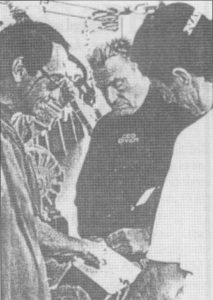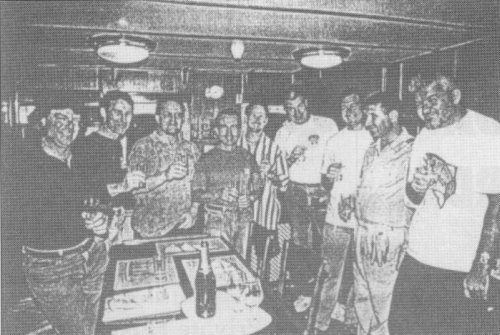- Author
- Spencer, Mark
- Subjects
- History - WW1
- Tags
-
- RAN Ships
- HMAS AE2
- Publication
- September 1999 edition of the Naval Historical Review (all rights reserved)
For 83 years, the AE2 lay on the soft mud floor of the Marmara largely forgotten.

Her epic story and her likely impact on the perpetuation of the Gallipoli fighting has never really been appreciated by the Australian public, who mostly were not even aware of submarines’ existence in the First World War. Australian Ambassador in Ankara, David Evans, was well aware of the AE2 however, and suggested to underwater explorer Selçuk Kolay, director of both the Rahmi Koç Museum in Istanbul and the Rahmi Koç Cultural Foundation, that he search for the AE2. Mr Kolay, using sophisticated sonar and magnetometric apparatus, had been successful in the location of other wartime wrecks of significance in and around Turkey.
Mr Kolay took on this assignment, and in 1996, located a wreck at a depth of 86 metres strongly suspected of being the AE2. A group of Australian divers and maritime archaeologists led by underwater explorer and part-time dentist Mark Spencer from Sydney investigated the wreck later in 1997. Their expedition was supported by Turkish Airlines and the Royal Australian Navy and also had the blessing of the Turkish Ministry of Culture. The wreck, much to the surprise of the joint Australian/Turkish team, turned out to be an old steam ship which had collapsed in such a way that she deceived everyone into thinking that she was a submarine wreck.
Selçuk Kolay continued his search, and in June 1998, was rewarded with a sonar image of a wreck at 72 metres depth that did indeed fit that of an early E-Class submarine. Aware of possible scepticism from the ‘land down-under’, he sent a short video tape to Mark Spencer back in Sydney of his dive on the wreck in company with fellow Turkish divers Kaya Yanar and Levent Yüksel. It was fairly conclusive evidence that the wreck was indeed the AE2.

Dr Spencer again organised his team and returned to Istanbul in late September that year. With the support of the Rahmi Koç Museum’s considerable resources, the joint Turkish and Australian expedition to further document and inspect the AE2 brought back irrefutable evidence of its identity. Subsequent media interest in Australia reminded the public of the significant role played by their navy in the legendary Gallipoli Campaign. Similar media interest in Turkey and even larger Europe reminded people of the potent capability of the early submarines and the fact that the AE2 was the first enemy craft in five hundred years to successfully transit the Dardanelles Strait.
The submarine wreck is remarkably intact, at least ostensibly. “Standing on the aft casing (deck) of the AE2 somehow brought me closer to the Anzacs at Gallipoli than I’d been before,” said Dr Spencer. “The submarine is more exposed above the soft mud bottom than we had expected”, he said. The divers used special mixtures of gases containing helium on the bottom and higher oxygen mixes for the decompressing nearer the surface. The depths are beyond safe and effective working conditions breathing normal air.
The Rahmi Koç Museum’s specially fitted-out research and salvage vessel MV Saros had a recompression chamber on board and the attendance of a well-qualified physician, Dr Akin Toklu, a specialist in hyperbaric medicine.
More work will need to be done in examining the AE2 on the bottom before any efforts are made to raise her, which is the intention of Mr Kolay. “Once brought back to the surface, it is going to be the only WWI E-class submarine on display anywhere in the world!” he says. Whatever becomes of the AE2, her role for the future should now be clearly defined. She was once an instrument of war, a symbol of conflict between two nations, that now have an amicable affinity towards each other. She should now be a symbol of that friendship and mutual co-operation so apparent at this time. Stoker and his crew would surely approve.




